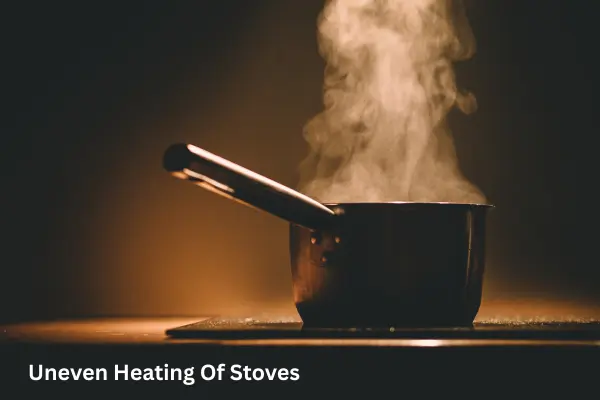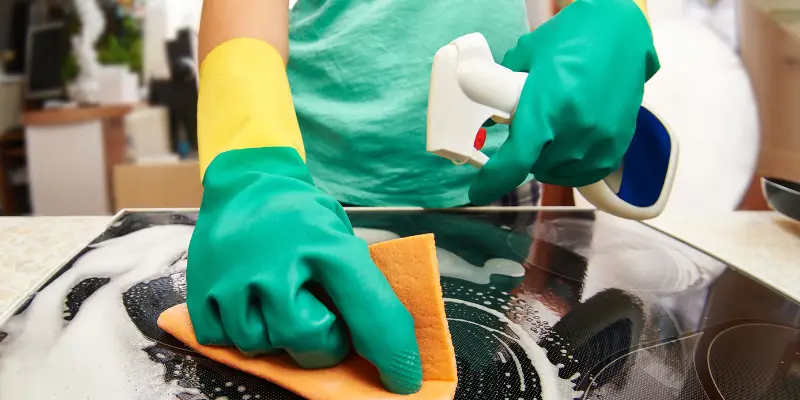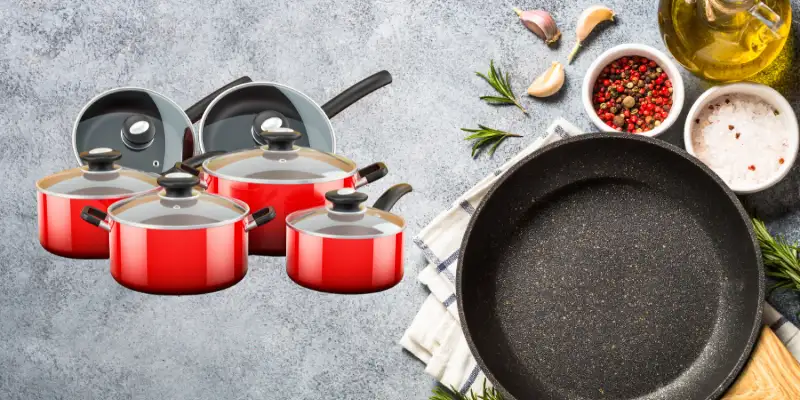Expert Guide to Fix Electric Stoves Uneven Heating Fast
Updated: 3 Jul 2025
260
Is your food cooking faster on one side than the other? Or are you tired of hot spots burning your meals while the rest stays cold? You’re not alone. Many homeowners face this annoying issue, and most don’t realize their stove could be the problem. Cooking on an electric stove with uneven heating can ruin meals, waste energy, and even damage your cookware.
Uneven heating in electric stoves is a common frustration in many kitchens. But the good news is — most causes are easy to fix once you know where to look.
In this post, you’ll learn why electric burners don’t heat evenly, how to fix it step-by-step, what cookware helps distribute heat better, and when it’s time to call a technician. If you’re tired of burned edges and undercooked centers, this guide is for you.
What Does Electric Stove Uneven Heating Mean?

Electric stove uneven heating happens when the heat doesn’t spread evenly across the burner or inside the oven. One side of the pan gets hot, while the other stays warm or cold. This makes cooking harder and ruins the texture of food.
Whether you’re using a coil stove or a smooth glass-top, uneven heating can occur for many reasons. It’s important to know this is more than just a cooking inconvenience. It can also affect energy efficiency, cause overheating, or even damage your cookware over time.
Top 7 Causes of Uneven Heating of Electric stoves
Let’s look at the real reasons and fix electric stoves uneven heating.
Warped or Poor-Quality Cookware
This is the most common cause. If the pan doesn’t sit flat on the burner, heat won’t spread properly.
Fix: Use flat-bottomed, heavy pans. Best cookware for electric stoves includes cast iron, tri-ply stainless steel, and heavy aluminum.
Damaged or Faulty Burner Coil

Coil-style stoves wear out over time. When coils crack or warp, the heat distribution suffers.
Fix: Replace any coil that glows unevenly or looks deformed.
Loose or Corroded Coil Connection
Over time, the connection between the coil and socket may become dirty or loose.
Fix: Turn off the power. Remove the coil, clean the ends, and reinsert it firmly.
Grease or Debris Blocking Heat
Oil splashes and food crumbs can block heat or cause hot spots on the burner.
Fix: Wipe coils and drip pans regularly. Never let spills build up under the burner.
Inaccurate Oven Thermostat
If the oven part of your electric stove is baking unevenly, the thermostat may be faulty.
Fix: Use an oven thermometer to check the real temperature. Recalibrate if needed. Replace the thermostat if the difference is over 25°F.
Electrical Wiring Issues
This is rare but serious. Damaged wires can cause low or inconsistent power to the burner.
Fix: Call a certified technician. Never attempt internal repairs yourself.
Overloaded or Blocked Oven
Too many trays or poor placement of pans can block airflow in ovens, leading to uneven baking.
Fix: Place dishes in the center. Keep at least 2 inches of space between them.
How to Fix Electric Stoves Uneven Heating (Step-by-Step)
If your electric stove heats unevenly, don’t worry — most issues can be fixed without replacing the entire unit. Follow this step-by-step guide to solve the problem safely.
- Step 1: Test with Different Cookware
- Step 2: Inspect the Burner Coil
- Step 3: Clean the Burner and Drip Pan
- Step 4: Test the Burner Connection
- Step 5: Check for Oven Thermostat Issues
- Step 6: Avoid Overcrowding
- Step 7: Call a Technician if Needed
Step 1: Test with Different Cookware
- Use a heavy, flat-bottomed pan on the same burner.
- If heating improves, the issue is your cookware.
- Avoid warped, cheap, or lightweight pans.
- Also read Are Electric Stoves Suitable for All Cookware?
| Expert Tip |
|---|
Use a cast-iron skillet for testing. It spreads heat evenly and quickly shows if the stove is working correctly. |
Step 2: Inspect the Burner Coil
- Turn off the stove. Let the burner cool.
- Remove the coil from the socket.
- Check for discoloration, warping, or cracks.
- Reinsert firmly and power on.
If one section glows red and the rest stays dark, replace the coil.
Step 3: Clean the Burner and Drip Pan

- Remove the burner and drip tray.
- Wipe with a soft cloth soaked in mild dish soap.
- Avoid using steel wool or harsh abrasives.
- Let everything dry completely before reinstalling.
Pro Tip: Do this once a week to prevent build-up
Step 4: Test the Burner Connection
- With power OFF, remove the coil.
- Clean the metal ends with a soft brush.
- Check for any rust or black burn marks.
- Reconnect the coil snugly into its socket.
Step 5: Check for Oven Thermostat Issues
If the oven bakes unevenly, check the internal temperature using an oven-safe thermometer.
- Preheat the oven to 350°F
- Compare the thermometer reading to the oven setting
- A difference of 20–30°F means recalibration is needed
- Most ovens let you adjust the thermostat via the control panel
Step 6: Avoid Overcrowding
If you stack pans or overload the oven, it blocks airflow and causes uneven results.
- Use the center rack for even heat
- Don’t place pans directly above each other
- Leave 2–3 inches between dishes
Step 7: Call a Technician if Needed
If none of the above fixes work, the issue could be internal wiring, failing relays, or a malfunctioning control board.
- Signs you need a pro:
- Burners spark
- Stove trips the breaker
- Temperature changes suddenly during use
Comparison Table – Common Issues vs. Quick Fixes
| Issue | Sign/Symptom | Fix |
|---|---|---|
| Warped Cookware | One side of the burner is cold | Use flat, heavy cookware |
| Faulty Coil | Uneven heat across the pan | One side of the burner cold |
| Loose Connection | Burner flickers or weak heat | Clean and reseat coil terminals |
| Dirty Burner or Pan | Hot spots or smoking | Clean coils and drip pans |
| Bad Oven Thermostat | Uneven baking results | Calibrate or replace thermostat |
| Internal Wiring Problem | Inconsistent burner behavior | Call a licensed technician |
How to Prevent Uneven Heating: Expert Advice
Prevention is always better than repair. Below are easy habits and tips to stop the uneven heating temperature issue before it starts.
1. Clean Regularly
- Clean coils, drip trays, and glass tops weekly
- Use mild cleaners, not abrasive ones
- Avoid spilling sugary or oily foods that leave residue
For more details, click How to Clean Electric Stove: Step-by-Step Guide
2. Use the Right Cookware

- Choose flat-bottomed, heavy pans
- Avoid non-stick pans with warped bases
- Check the label: “For use on electric stoves”
3. Perform Monthly Inspections
- Look for rust, loose coils, or black marks
- Test each burner for even glow
- Listen for unusual humming or clicking sounds
4. Use a Surge Protector for Digital Models
- Install a surge protector or plug your stove into a dedicated breaker
- Avoid plugging other heavy appliances into the same outlet
5. Use an Infrared Thermometer to Check Hot Spots
- Helps identify faulty coils or warped pans fast
- Point and scan the surface while the burner is on
- Hot spots >50°F difference? That’s uneven heating in action
FAQs
Why is my electric burner not heating evenly?
Most likely causes are a damaged coil, loose connection, or warped pan. Check each part step-by-step as shown above. Cleaning and testing are the first steps.
How do I know if my burner needs to be replaced?
If the coil doesn’t glow red evenly or shows black burn marks or warping, and causes flickering heat, then it’s time for a replacement.
Is uneven heating dangerous?
In some cases, yes. A faulty element or frayed wiring can overheat and pose a fire hazard. If you smell burning plastic or hear crackling sounds, turn off the stove and call a technician immediately.
Does brand or model affect heating quality?
Absolutely. Cheap stoves often come with poor-quality coils and thin insulation. Brands like GE, Frigidaire, and Whirlpool use better heating elements that maintain even heat. Explore Best Electric Stove: How To Choose
Final Thoughts
Dealing with electric stove uneven heating problem can be frustrating, but it’s rarely a mystery once you know where to look. If you notice your electric burner is not heating evenly, don’t ignore it. Acting quickly not only improves your cooking results, but also extends the life of your stove.
Always follow manufacturer instructions, and never hesitate to call a technician for electrical or internal issues.
“Small fixes today prevent expensive repairs tomorrow.” — James Carter, Appliance Service Expert
Need more help with your electric stove? Browse our expert guides at StoveMastery.com and keep your kitchen running smoothly.
References
- https://www.energystar.gov/products/electric_cooking_products
- https://www.nfpa.org/education-and-research/home-fire-safety/cooking
Please Write Your Comments